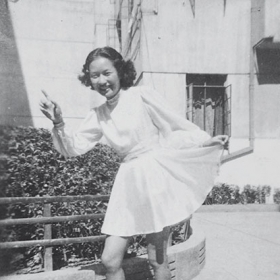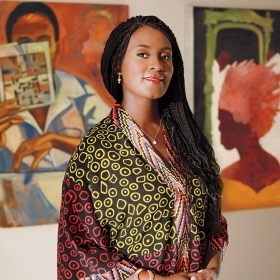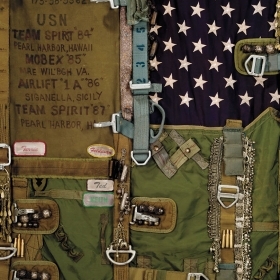The Davis Museum spring exhibition Going Viral: Photography, Performance, and the Everyday put forth 123 anonymous snapshot photographs from the early 20th century that remind us of ways that we are alike—while also interrupting our assumptions about the past.

Anonymous snapshot, Gift of Peter J. Cohen, 2019.626
You raise your hands to form a rectangle, squint, and quickly tap down an index finger. A familiar gesture, one that future generations (even the iPhone generation of today) might puzzle over, reinterpret, or find endearing. Snap.
What do these gestures we make, the poses we strike, say about us? What do the ways that we immortalize these fragments of our lives reveal?
“Instagram didn’t invent everyone repeating each other,” notes Carrie Cushman, Linda Wyatt Gruber ’66 Curatorial Fellow in Photography. People posed conventionally and constructed their self-images even back when a snapshot was a singular and tangible object, not something to be hashtagged and shared online. The Davis Museum spring exhibition Going Viral: Photography, Performance, and the Everyday put forth 123 anonymous snapshot photographs from the early 20th century to explore this reality.
In curating the show, Cushman drew from a gift of almost 1,000 snapshots given by vernacular photography collector Peter J. Cohen. Amid varied images, patterns emerge, such as the gesture of a girl showing off her skirt, as well as commonplace compositions, like a photographer including her own shadow in the image.
These photographs remind us of ways that we are alike—while also interrupting our assumptions about the past. Personal snapshots (“a new world for photography scholarship,” says Cushman) can provide a lens through which to explore people’s histories. This includes populations that have previously lacked representation—in art, and in our textbooks. “That’s my hope for the collection,” Cushman says, “that people can do actual historical work.”
At this time, the Davis Museum is making its galleries and exhibitions accessible virtually and developing online resources to continue the museum’s mission. “Going Viral” is available at bit.ly/Davisphotog.


